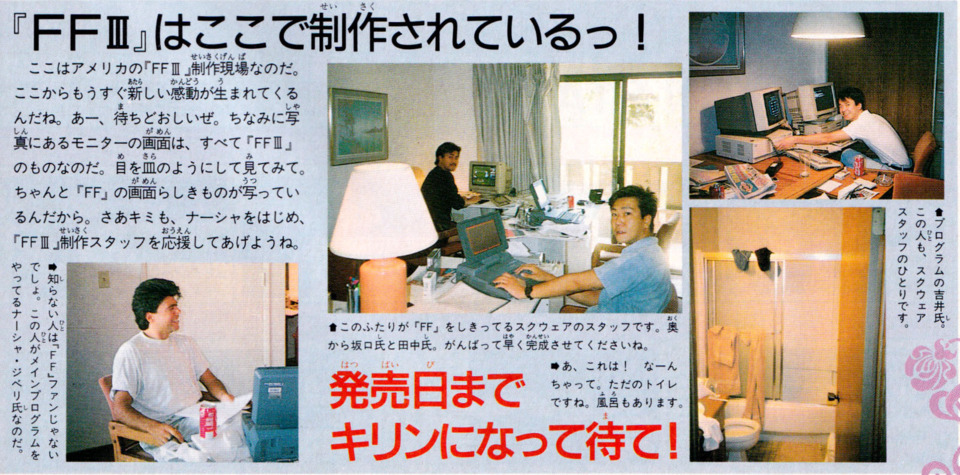Finishing Final Fantasy III [Part 1]: Seriously, Why Is This Considered A "Bad One?"
By ZombiePie 5 Comments
Author's Note: SPOILER WARNING! This is a two-part series looking at Final Fantasy III. While this episode primarily discusses mechanics and gameplay, it is not entirely free from story spoilers. You have been warned.
Also, if you enjoyed this episode, here's a directory to the first episodes of every Final Fantasy game I have covered on this site thus far:
- Part 1 of Final Fantasy I series
- Part 1 of Stranger of Paradise: Final Fantasy Origins series
- Part 1 of Final Fantasy II series
- Part 1 of Final Fantasy V series
- Part 1 of Final Fantasy VI series
- Part 1 of Final Fantasy VII series
- Part 1 of Final Fantasy VIII series
- Part 1 of Final Fantasy IX series
- Part 1 of Final Fantasy X series
- Part 1 of Final Fantasy X-2 series
- Part 1 of Final Fantasy XI series
- Part 1 of Final Fantasy XII series
- Part 1 of Final Fantasy XIII series
- Part 1 of Final Fantasy XIII-2 series
- Part 1 of Lightning Returns: Final Fantasy XIII series
Part 1: No Seriously, Why Does This Game Have Its Reputation Of Being "Bad?"
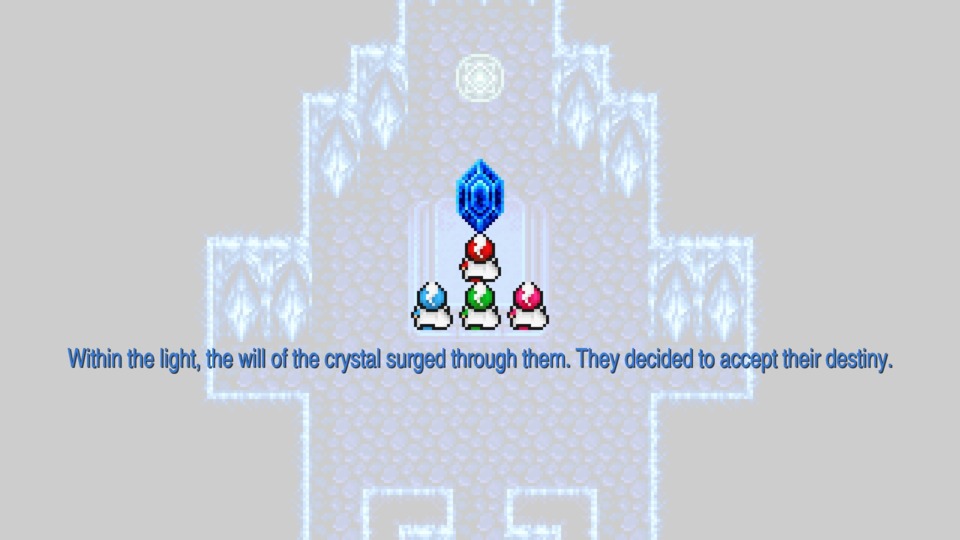
Goodness, how time can fly by. Despite retrospectives about the Final Fantasy franchise and works of Squaresoft/Square Enix being my initial blogging bread-and-butter, it has been over two months since I last had a stab at covering anything in the franchise and over one year since I covered a non-sequel numbered Final Fantasy game. That changes today, but I will warn you that I do not suspect Final Fantasy III will require the deep closed reading into complex storytelling, intricate mechanics, or its legacy on games that succeeded it as much as some of the other games I have covered. Certainly, Final Fantasy III deserves all of the credit in the world for "righting the ship" after the wild experimentation in Final Fantasy II and pioneering the job system that would go on to become perfected in Final Fantasy V. Beyond that, it's kind of a weird first step that more or less errs towards Squaresoft "figuring things out" before they shot for the stars with Final Fantasy IV. I will use the words "quaint" and "cute" a lot when talking about this game, and I feel that's especially apt, considering this came out two years AFTER Dragon Quest III and the same year in Japan as Dragon Quest IV.
And yet, I'm still astonished to see it near the bottom of everyone's rankings of games in the Final Fantasy franchise. It's by no means perfect, but come on now. Ranking it along with The After Years, OG Final Fantasy XIV, Final Fantasy II, and Final Fantasy XIII is bonkers! Is Final Fantasy III hard? Sure, but let's not pretend that was not the norm with the genre or not the case with the games that preceded it. Final Fantasy I gets and deserves a lot of credit for starting things and being a weird pseudo-step into roleplaying games and Dungeons & Dragons for those who grew up with it. Still, it gets a mountain of "reviewer's tilt" because of nostalgia. It might have the most messed up assortment of main-story dungeons (i.e., the Earth Dungeon and Chaos Shrine) of the 8-bit era, making it occasionally as rough an experience to return to as Final Fantasy III. Also, the issue of frequent grinding and the game's supposed "legendary" difficulty? I want this statement to come across as something other than a flex, but those parts of the game's reputation are overrated. When examined within the context of the era it inhabited, the amount of grinding Final Fantasy III expects of you is not that heinous or out of the ordinary, especially compared to its contemporary Dragon Quest, Ys, and Fire Emblem rivals.
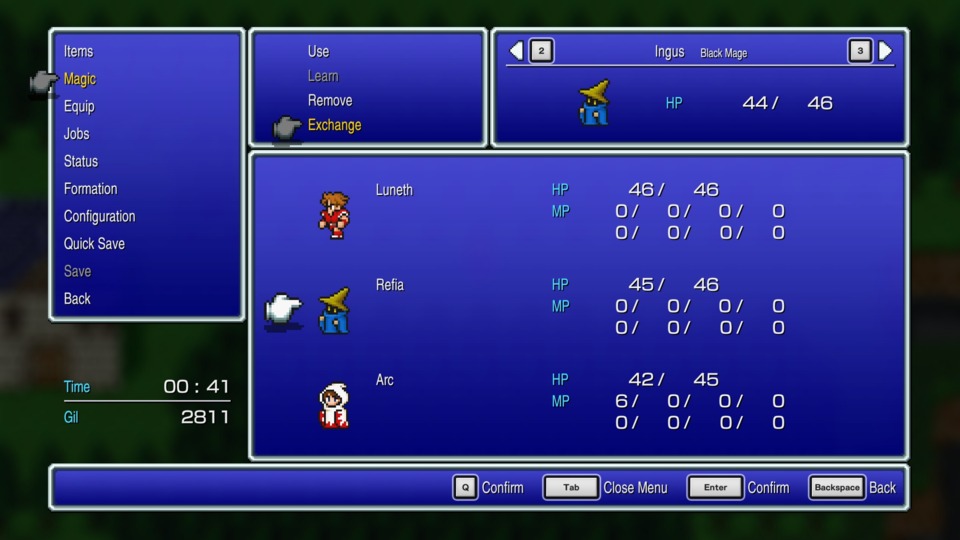
Regarding its punishing nature, Final Fantasy III earns that portion of its reputation, but only in a handful of specific dungeons and bosses. For the most part, the game progresses at a decent clip, and the completion of optional missions and side quests ensures you are near where the game wants you to be to go further. Unless you actively avoid random encounters, which is an option until the final act, Final Fantasy III does a decent job of keeping you in synch with the town-overworld-dungeon-boss template that defines the franchise even to this day. Also, look me in the eyes and tell me if there's anything in this game on par with Dark Fact from OG Ys or the more complex battles in Fire Emblem: Thracia 776. Yeah, the Cloud of Darkness is BULLSHIT, but that's kind of how final bosses in every JRPG worked! JRPGs of the 8 and 16-bit era were chores to complete, and Final Fantasy III is no more or less out of that mold. What comes up a lot that I can agree with is the rigidity of Final Fantasy III's job system and the fact that there's a lot of cruft when it presents all of its options. A handful of jobs can carry you for most of the game (i.e., White Mage, Black Mage, and Knight), which you unlock at the start; unfortunately, others are only useful in specific levels or dungeons (i.e., Dark Night and Dragoon); while many more are ones you should avoid outright (i.e., Bard, Evoker, and Viking). And the fun jobs, unfortunately, don't level up as quickly as you would like, with many of their more extraordinary abilities tucked away until the final few chapters.
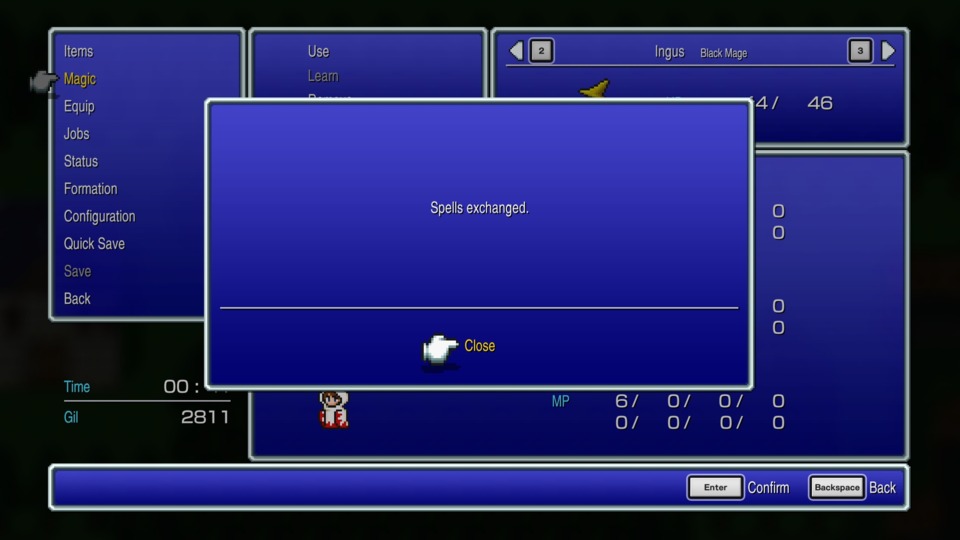
Yet, I still see very little to fault the game, even with those quibbles in mind. That is the cost of experimentation, and we have to remember that in the late 80s and early 90s, the JRPG genre and label were still a work in progress. After Final Fantasy II, Squaresoft and its soon-to-be marquee franchise required a shake-up, at least mechanically speaking. If they threw things back to the first game, then Final Fantasy III would have been laughed out of Japan for being well behind Dragon Quest regarding mechanics and gameplay. Considering how much of the Final Fantasy "template" started in some way, shape, or form in this game, I think its faults become immediately more understandable. This game has the series' first "true" side quests, a transforming world map, and the foremost incarnation of a swappable job system, all admirable experiments. When the game first came out, it was one of the most massive games ever to be released on the Famicom, needing a custom 512 KB cartridge, the second-highest capacity cartridge on the platform. The storytelling in Final Fantasy III is also a step in the right direction. There are guest party members, subplots, and a driving antagonist, with motivations that get clearer as the story progresses. Again, it's quaint by modern standards but a sign of progress for one of the most important franchises in the entire video game industry. To get to the epic storytelling of Final Fantasy IV or VI or the freeing gameplay of Final Fantasy V, Final Fantasy III needed to take some baby steps to feel things out. While some of that feels awkward, it still was a vital part of the process for this franchise and the people who worked on it to get to where they are now.
Part 2: But Wait, Should You Play The Pixel Remaster Version Or The 3D Remake? The Answer Is Not That Straightforward
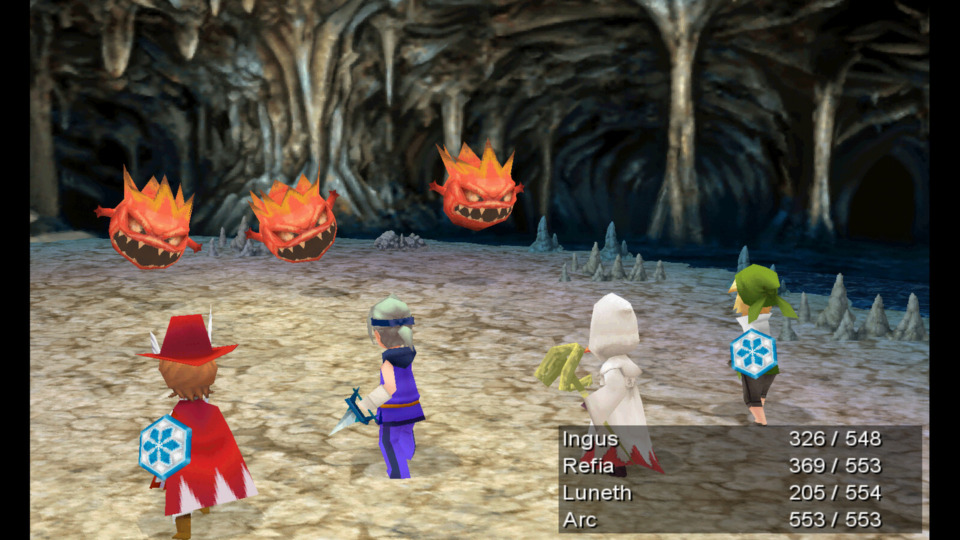
But before we delve into the game itself, we must revive one of the most significant debates clouding Final Fantasy III: should you play the Pixel Remaster or the 3D Remake? When I played Final Fantasy VI, the production values and graphical improvements made by the Pixel Remaster were far and beyond enough to forgive some minor quibbles about it lacking optional dungeons exclusive to the GBA or iOS ports of the game. The same sentiment applies to Final Fantasy I and II, and a bonus goes to the Pixel Remaster for preserving each game's unique magic and leveling systems instead of attempting to redo or rebalance them. With Final Fantasy III, IV, and V, things are not so decisively in the Pixel Remaster's favor. I'm not suggesting anyone go out and track down ROMs for the Android and iOS versions of those games, as whatever gameplay or content improvements they may have are not enough to outweigh the fact they look like complete and utter trash. Square Enix erased them from all marketplaces, and for good reason, in favor of the Pixel Remaster games.
However, in a rare victory to game preservation, Square Enix has never pulled the 3D DS remakes of Final Fantasy III and IV from mobile or PC marketplaces. Mercifully, and there's a solid foundation to support this sentiment, Square Enix views the 3D Remakes of III and IV as entirely distinct and different games from the originals they sought to adapt. When you include the fully-voiced cutscenes, new 3D character models, rebalancing of bosses and character leveling, and, in the case of Final Fantasy III, the introduction of entirely new mechanics to make the game more engaging, it is hard not to agree with this viewpoint. It will get me into heaps of trouble when I eventually decide to tackle Final Fantasy IV, but I prefer the 3D Remake to the Pixel Remaster even to this day. Weird pronunciations of Cecil's name and the 3D character models erring too closely to a cutesy chibi style aside; it's a better game than playing any version of vanilla Final Fantasy IV. The characters getting new plotlines, the world having side stories that add more context, and the accompanying cutscenes to every boss fight add so much to the game's world and storytelling that I don't want to play it again without those. Also, the 3D Remake of IV is more fun to play, thanks to it having way more meat on the bone.
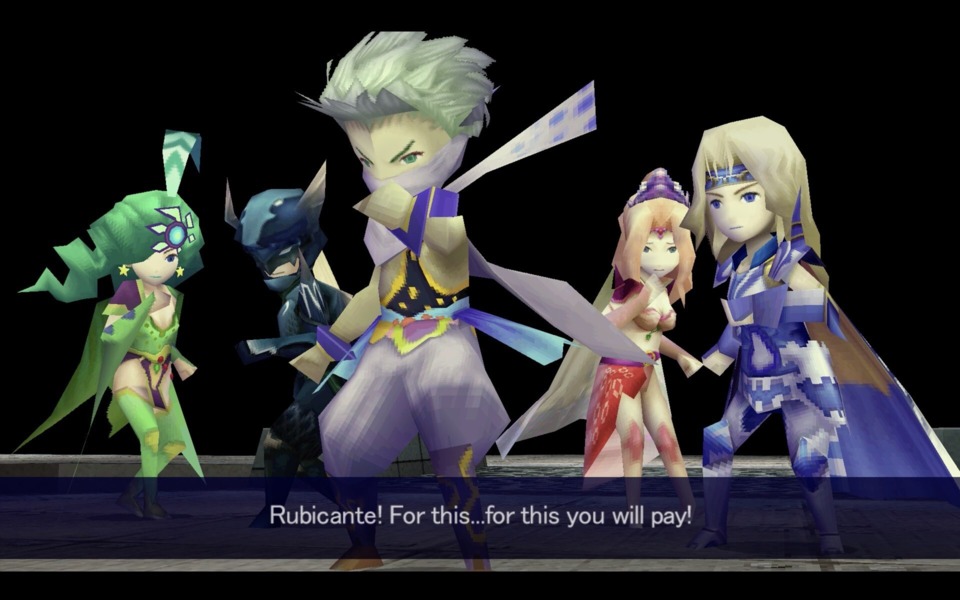
The same sentiment applies to the 3D Remake of Final Fantasy III, but to a far lesser degree. Let's jump into the positives and reasons why you should consider the 3D Remake of Final Fantasy III instead of the Pixel Remaster version. First, the 3D Remake re-writes the characters so they have entirely new backstories and mountains of new dialogue, which, unlike the Final Fantasy IV 3D Remake, is NOT voice acted. Nonetheless, the storylines you encounter in the game do enough to put faces on your party members who otherwise don't have any in the original game or Pixel Remaster version. Final Fantasy III sees a return of the guest party system from Final Fantasy II, and it is an entirely superficial mechanic unless you are playing the 3D Remake. Only there do the guests provide special attacks during battles, much like a Capcom Vs. fighting game. The cruft I mentioned during the introduction is less of an issue in the 3D Remake. The 3D Remake rebalances the weaker jobs and gives them new abilities that make them far more compelling and exciting to play. And some of these class changes are not something to scoff at either. In the 3D Remake, the Scholar can use up to Level 3 White Magic when it could not do so in the original, and the Remake's Viking has an improved "Provoke" ability, dramatically enhancing its job of drawing damage during boss encounters.
And yet, the advantage is still in the favor of the Pixel Remaster of Final Fantasy III for two VERY BIG reasons! First, the 3D Remake rebalanced every boss and enemy because it was designed for the Nintendo DS, and the handheld struggled to display large swarms of enemies during random encounters. As a result of the game only being able to show a limited number of enemies, Square Enix compensated for this by giving most enemies stronger attacks and additional HP or, especially during bosses, more actions per turn. That results in the 3D Remake being even GNARLIER than the original game in some spots, especially during encounters emphasizing status effects or instant KO-ing abilities. With individual enemies taking more time to kill, but with the turn order the same and you are still stuck with four party members, the odds of you meeting an untimely demise or getting stuck with an immobilized character are greater. However, the most immense annoyance when playing the 3D Remake comes when you switch your character's jobs. For reasons I don't entirely understand, while the 3D Remake rebalances the game's jobs and even gives them some cooler options, it PUNISHES YOU whenever you decide to swap one character's previous job for a new one. This system, called the "Job Adjustment Phase," generally lowers your character's primary stats by 12.5% when they change an old job to a new one until your character survives an uncommunicated number of battles. Considering you still need to worry about losing spell slots when switching a magic caster to a physical attacking class, this new mechanic is a complete pain. All it does is force you into even more grinding than you already have done, and when getting the last crystal, that penalty is especially lethal.
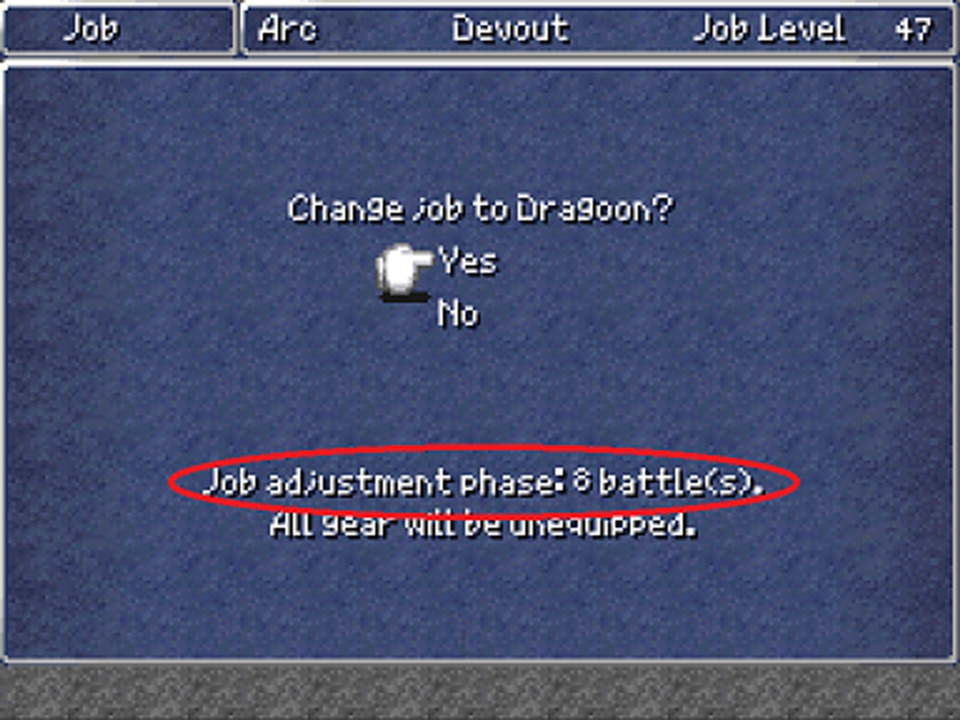
Ultimately, this choice is going to come down to personal preference. Was your first exposure to Final Fantasy III the DS Remake, and as a result, you have personal nostalgia for that version of the game? If "No," you are likely better off starting with the Pixel Remaster version. Likewise, the look and sound of the Final Fantasy III Pixel Remaster is downright better. Like everything from the Pixel Remaster initiative, bad default launch era fonts aside, it looks incredible, and the merging of new-generation particle effects and shadows with old-school pixel graphics is nothing short of stunning. Final Fantasy III is not at the top of my list of games you should go out of your way to play, but if you are in the mood for a retro-styled JRPG on modern hardware, you could do worse.
Tangent: The Pixel Remaster Minimap Ruins Part Of The Game
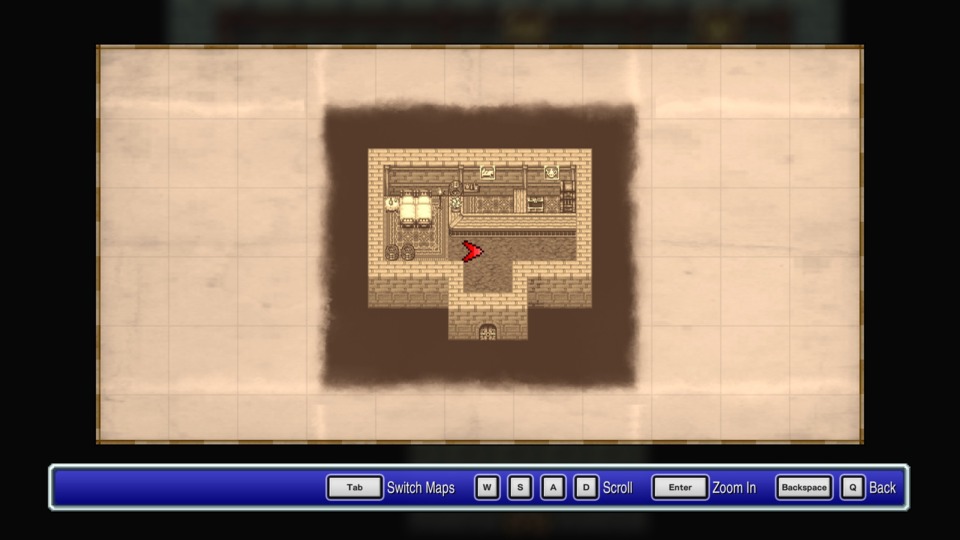
I won't spend too much belaboring this point because I covered it during my Final Fantasy VI retrospective. Nonetheless, with the Pixel Remaster editions, Square Enix has added many quality-of-life improvements that make playing Final Fantasy III a far better time than ever. You can save on the fly, speed up combat, boost your party's amount of Gil, and review cutscenes and musical tracks individually after they are over. These are universal player assists that exist in EVERY Pixel Remaster re-packaging of a classic Final Fantasy game, and I understand that, for the most part, you can opt out of these if you don't like them. However, one feature in these Pixel Remaster games always rubs me the wrong way, and that has to be the omnipotent minimap on the upper-right portion of your screen. Admittedly, this feature is a godsend. It allows you to avoid needing to go to GameFAQs and pull up crude renditions of maps for these games and realize their dungeons have awful dead-ends and loops that only exist to make you miserable. Again, there's a reason to support these games having a minimap, especially in Final Fantasy I and II, which have some BRUTAL dungeons with odd design choices that can take hours to parse.
Nonetheless, by Final Fantasy III, Squaresoft learned from the two games that preceded it, and there is a specific class in the game that makes secret passages and tunnels visible to the player. With the minimap right there by default, and displaying ALL secret passages in a level the moment you bump into one, there's no reason for you to opt into that subsystem or character class build path anymore. Likewise, this minimap shows you EVERYTHING right from the get-go! When you enter a new environment, the buildings with items or equipment to sell are immediately marked, and the stairs to lower or higher levels in tombs or dungeons are easy to identify and plot a path toward. Now, Final Fantasy III is far more rudimentary when compared to Final Fantasy VI. Still, a worry I expressed when discussing this minimap feature in the Pixel Remaster of Final Fantasy VI applies here. People playing Final Fantasy III for the first time will likely use this signposting to avoid or opt out of interacting with non-story critical buildings and NPCs, which does a disservice to the genuine worldbuilding attempted in the game. Finally, with Final Fantasy III being a partial reaction to the negative input Square got from Final Fantasy II, the dungeons in Final Fantasy III feel incredibly small, and having that minimap and following it makes you realize how linear the dungeons in this game usually are. There are few complex puzzles to solve, and yes, the game does the mini-status stuff to mix things up, but for the most part, these are bog standard treks through clearly communicated elementally-themed dungeons. This shortcoming becomes incredibly cogent when you have a cheat sheet like a minimap on standby.
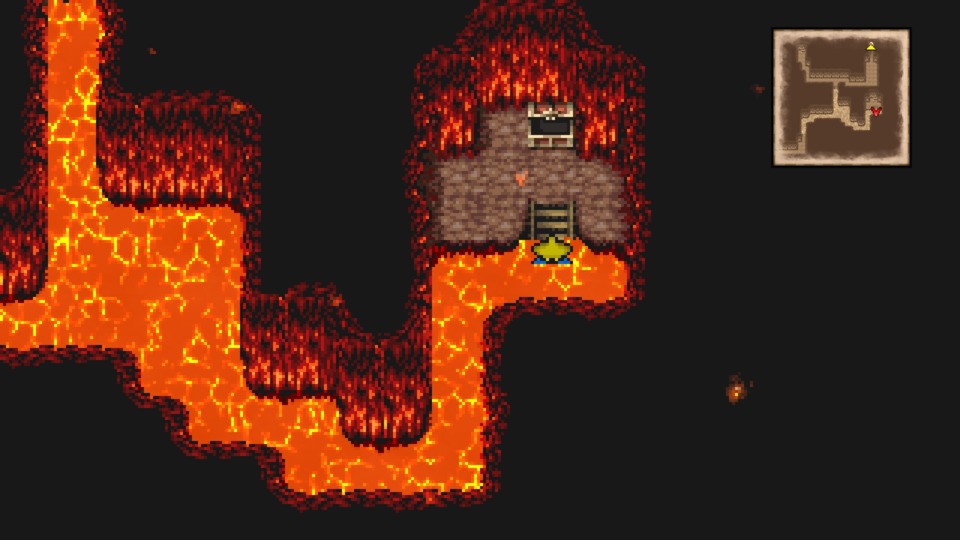
Part 3: The Job System And Its Design Aren't That Bad Or Punishing For The First Half Of The Game (But There Are Plenty Of Annoyances)
Let's go back to me saying "quaint" seven million times because it is time to get into the nitty gritty of Final Fantasy III's story and job system. Unless you are playing the 3D remake, this game stars four unnamed characters thrust into an adventure to save the world using the power of four elementally-themed crystals. Unlike the first Final Fantasy, Final Fantasy III locks your characters into being Onion Knights until you quickly encounter the Wind Crystal, which unlocks the Warrior, Monk, White Mage, Black Mage, and Red Mage jobs, an obvious callback to the job classes of the past. The Vancian Magic system from the first game is also back with the Pixel Remaster version, meaning you need to worry about spell slots rather than using a pool of MP, and you can only load three spells per spell level before battles. As your magic casters level up, they get more spell slots and higher-tier magic abilities. Similar to Final Fantasy I, you need to buy spells from magic merchants just like you purchase equipment for your physical attackers. As much of an annoyance as the Vancian Magic System might be at its worst, it is a novel mechanic that adds strategy to the magic classes and is intertwined with how those jobs function. The 3D Remake and iOS/Android ports, which opt for pools of MP, are worse off for not using this system.
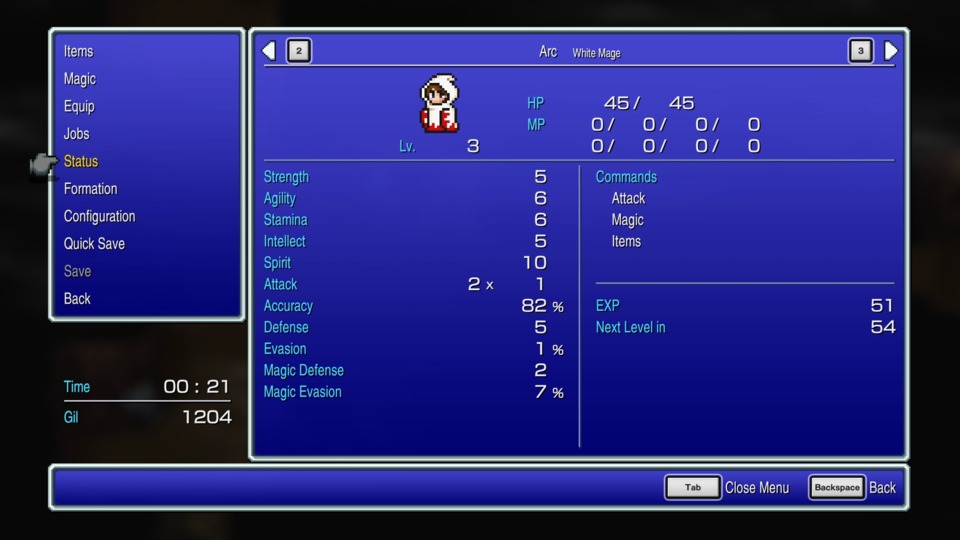
The physical and martial classes also have their quirks that make them distinct from one another. There are different weapon types, and certain classes of weapons can only be utilized by specific jobs. Each of them also sports a unique ability only they have. Seeing new garb on your characters and finding unique attack animations is fun and massively improved in the Pixel Remaster. Nonetheless, the Affinity System with Final Fantasy III is where some of those non-magic-based classes shine. As you level up, you don't just level up your characters' HP and main stats but also their affinities with their presently equipped jobs. A level one Dragoon isn't going to fumble the ball on the onset, but with a higher affinity, its regular attacks might hit twice rather than once, or it will have a higher likelihood of doing critical damage when using its unique Leap ability. Most of your first dozen dungeons direct you down specific party compositions or character jobs. While it requires hours of work and prep, that exact satisfying moment in Final Fantasy V when you get the gimmick of a dungeon and wipe an entire field of enemies in one turn is here and as gratifying. Warts and all, it is a system that works far better than its loudest critics might have you believe.
Nonetheless, Final Fantasy III's job mechanic is far from perfect, and I will be the first to admit that. How the game forces you into using some of its jobs is immensely annoying. A lot of people pick on the game's several dungeons that require you to use the "Mini" status to progress through miniaturized dungeons, and for a good reason, these sequences suck. They also are incredibly debilitating during the initial phases of the game when you have limited magical-casting options. Needing to burn a high-tier spell slot to waltz through story-required dungeons is NOT COOL, and that's doubly the case when you realize many of these Mini-based dungeons force you into encounters where only magic will do damage. If, like me, you made your party an equitable split of physical attackers and magic casters, you feel like the game is actively punishing you for exploring its options. This problem persists far longer than you would like, as there is a sequence and dungeon that incentivizes you to use the Dragoon and one that incentivizes you to use the Dark Knight. What annoyed me was that swapping all your characters to these classes seemed impossible. Even when you designate one character to be a healer, one of your other three characters is virtually handicapped because the cost of having everyone in the best equipment and using the best weapons is prohibitively too high. And the levels you get into the voluntold classes before you swap back to your preferences are not all that impressive either. Some of the character's base stats grow in unique ways, but the passive ability system in Final Fantasy V is absent here, which makes spending hours using jobs you don't like feel utterly pointless.
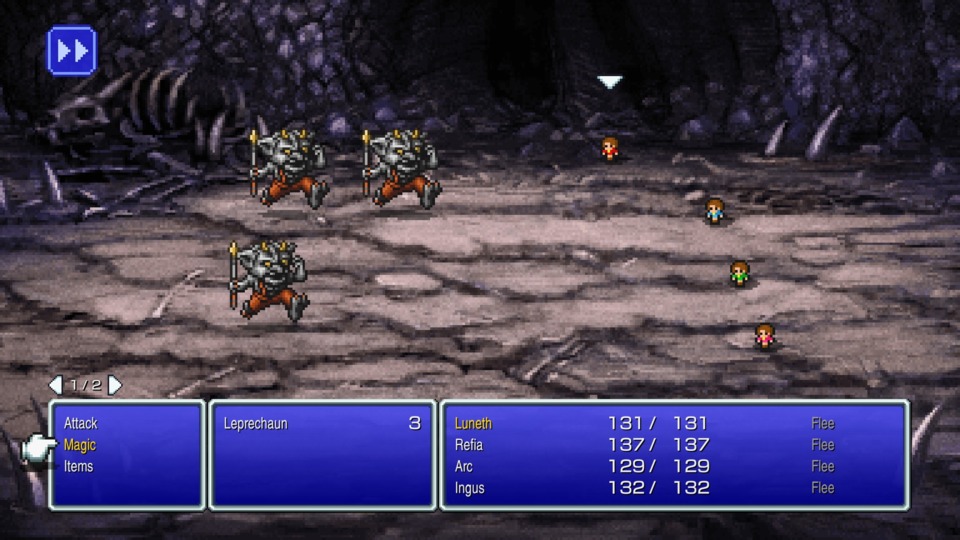
Beyond the unassailable charge of the jobs progressing slowly and opting you into hours of grinding, another shortcoming rears its ugly head as you get further into the game. Upon netting the game's penultimate crystal and unlocking the jobs hidden inside it, you realize that most of Final Fantasy III's jobs are improvements of the ones you started with. For example, the Evoker is a lesser version of the Summoner, the Warrior is a lesser version of the Knight, and the White Mage is a lesser version of the Devout. Once you unlock these advanced versions of your previous classes, there's no reason to return to your old ones. The immediate result is that you need to tread carefully when entering a new environment with a party decked in new and novel job assignments. In extreme cases, you may need to stomp around a previous environment before progressing. That's NOT a great feeling, especially considering your job level is far more important than your character's individual level. Having more HP and better stats is nice, but needing to start all over again to get more spell slots with a magic casting job is never fun. Holding on to older classes out of stubbornness is not a viable strategy either, as late-game enemies will require you to use strategies locked behind specific jobs.
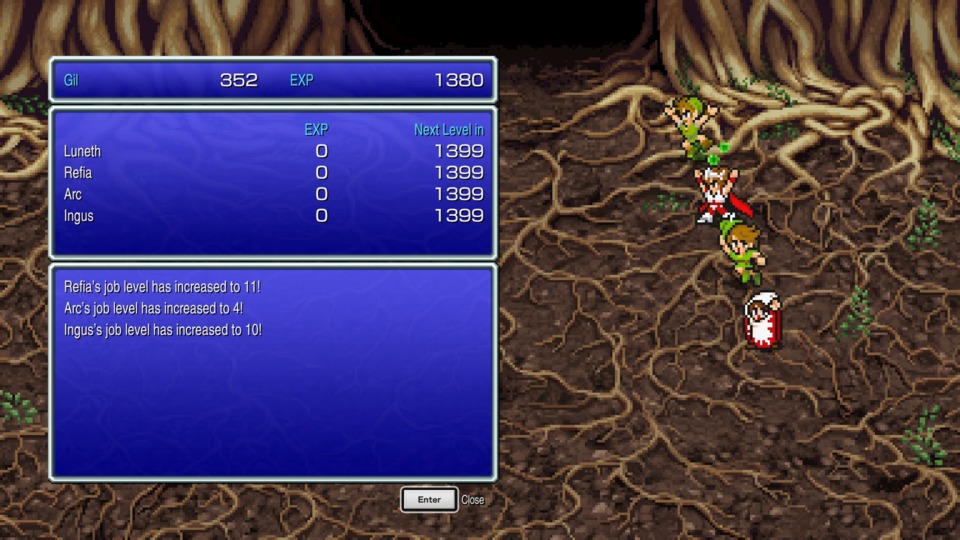
The clearest example comes when you explore a kingdom that a monstrous bird is attacking. You can use the classes and party composition you have enjoyed up to this point, avoiding the cue to use Dragoons. Still, you would be willingly tracking yourself into an inferior experience that is endlessly aggravating. Many unique classes fall into the same tired trope of having one or two scenarios where they make your life in a climactic boss battle easier, and it is up to you to think if these accommodations are something you want further. There's a specific boss battle where the Scholar is a virtual necessity, and it does a decent enough job of showcasing its upsides. Still, it falls to the wayside when you get the capstone classes that do gobs of damage regardless of an enemy's elemental affinities or weaknesses. Even with the unique classes that are not tracked to be superseded by direct replacements, the meteor that is Final Fantasy III's planned obsolesce comes for everyone and is not merciful. The sad thing is the game has a relatively breezy start wherein it actively encourages you to recreate your favorite parties from Final Fantasy I, sans Thief, and have a blast. The dungeons are relatively short, and the progression of those starting Wind Crystal jobs is straightforward and doesn't need a ton of interaction with the fiddly equipment system.
Tangent: Final Fantasy III's Pre-3D Remake Worldwide Releases Were Always Cursed
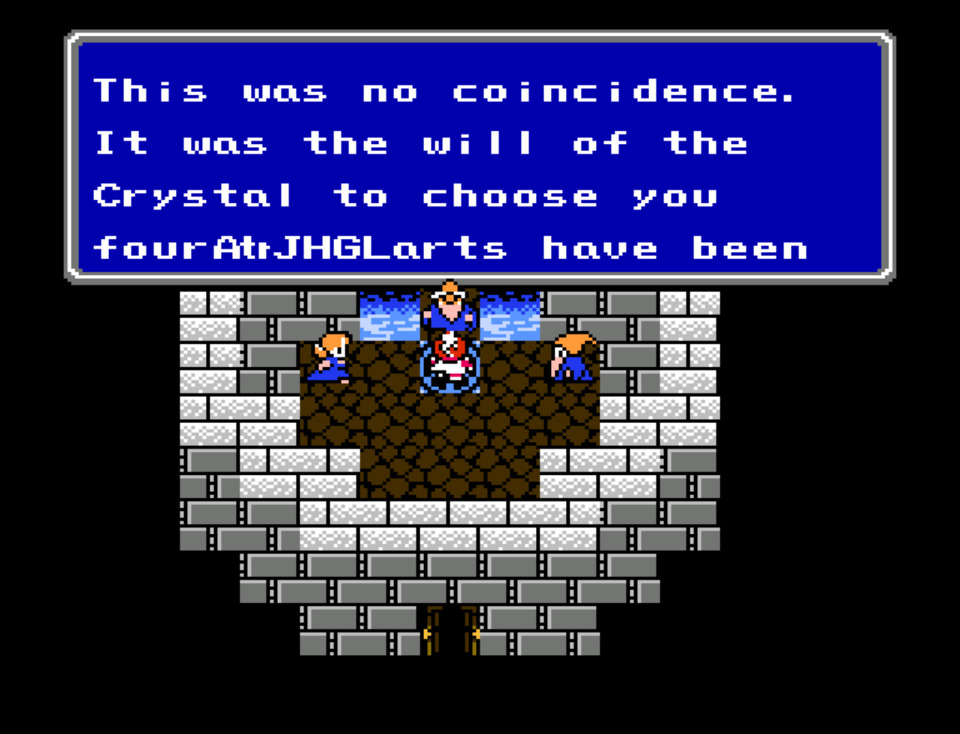
The release of Final Fantasy III outside of Japan before the 3D Remake, was cursed. The original game came out six to seven months before the Super Famicom came out in Japan, and while Squaresoft started the process of localizing it for markets outside of Japan, that seemed doomed from the start. The game was an unofficial last hurrah for the Famicom in terms of its size and scope. There are mountains of lines of dialogue to translate, and the size of its world dwarfed everything in the series that preceded it. Localizing the game was always going to be a Herculean task, and with people switching to the SNES and Genesis from the NES in the United States faster than anticipated, the diminishing returns on the effort seemed unavoidable. This is a weird fact to consider when you recognize that most of its programming was completed in Sacramento, California, a story we will discuss shortly. Correspondingly, the game was one of the earliest targets of the English-speaking fan translation community. When Final Fantasy III was released on the SNES, an active group of people was ready to correct you upon calling it the third Final Fantasy game on Usenet servers or BBSs. Fan translations of Famicom games took off with the release of the Windows-based emulator NESticle. The first fan-based effort to translate Final Fantasy III dates back to 1997, and the first "complete" translation dates back to March 1999. They are interesting to look at, but many of them represent the then-usual literal vs. figurative translation foibles of the era.
Yet, the rightful hesitancy of Squaresoft translating Final Fantasy III is not the end of the game's incredibly cursed localization history. The game was supposed to get a Wonderswan Color remake that Bandai, the manufacturer of the Wonderswan, spent a considerable amount of money to get. However, Squaresoft bit off more than it could chew and realized halfway into the project that the programming and coding for Final Fantasy III was far too complex and demanding for the handheld. Nonetheless, Final Fantasy I, II, and IV got Wonderswan Color remasters, which again speaks to how much of a creative and technical leap Final Fantasy III was compared to its predecessors and successors. Luckily for Squaresoft, Bandai pulled the plug on the platform before they could ding them for failing to follow through on their exclusivity deal. The game is also notably absent in the PlayStation's Final Fantasy Origins and Anthology releases, likely because the Wonderswan releases proved problematic. No one felt married to keeping its traditions and legacy alive, and it would be a tough cookie to crack. Luckily, that unfortunate trend has since come to an end.
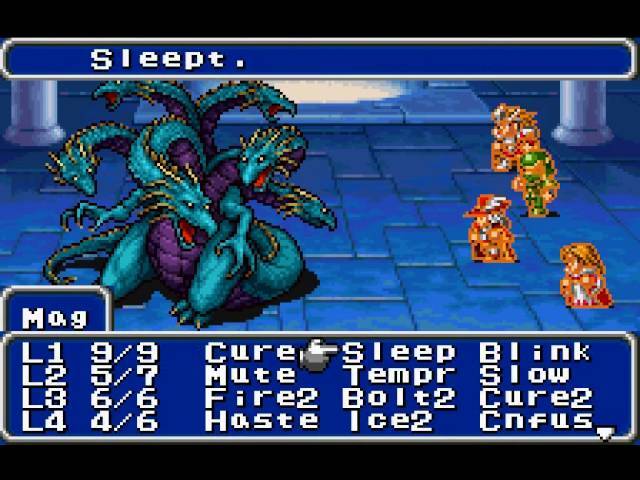
Part 4: The Pieces Of What Makes The Final Fantasy Series Special Are Here
Final Fantasy III's story is not a riveting affair, but the blueprint for what we most like about the "classic" Final Fantasy games is undeniably here. Having played titles like V, VI, VII, and IX before playing III made me realize that Final Fantasy III set the stage for their meteoric heights. The lineage of games that owe a debt of gratitude to Final Fantasy III is more than Final Fantasy V. Jobs like Monk, Samurai, Dragoon, and Summoner are long-standing Final Fantasy icons, and even how they mechanically work can point to Final Fantasy III as an ancestor. How Eidolons work in Final Fantasy IX is a tradition with strong roots pointing to Final Fantasy III. That this game's legacy has been overshadowed by its reputation of being difficult or grind-heavy does a massive disservice to it AND the games influenced by it. Final Fantasy III is not the game that started the Town-Merchant-Overworld-Dungeon-Boss template, but it feels codified as part of the series' DNA by this point. There's a forced-loss boss battle against Bahamut that tutorials the "Run" command, and there's a Cid that helps you rebuild an airship after you crash and ruin it. There's even a moment when a companion heroically sacrifices themselves to save the lives of your characters. The broad vinegar strokes of the franchise are here, and the bones in this steak are not rotten.
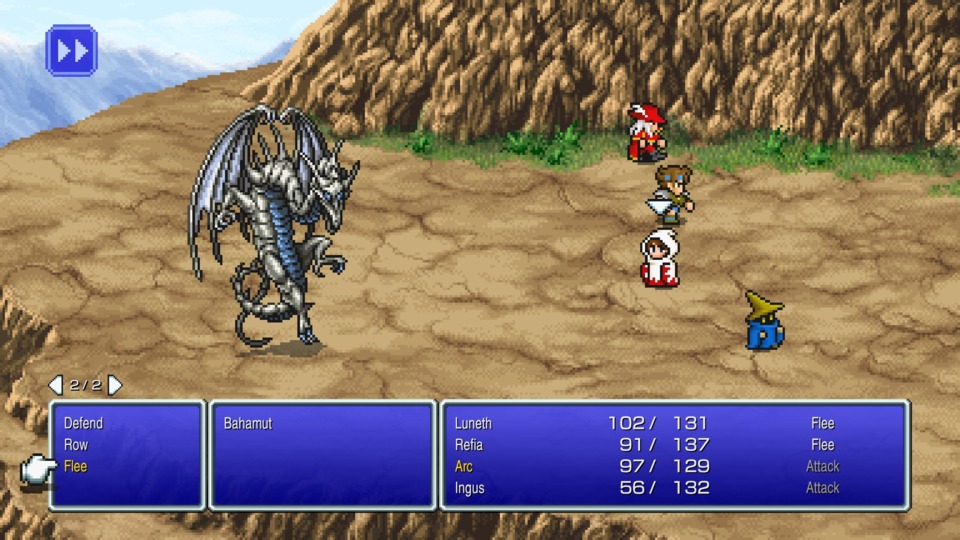
There are also meaningful improvements to what the Final Fantasy team attempted regarding characterization and storytelling. I won't sit here and tell you the default guest character system adds an extra layer to an already in-depth story. Nonetheless, characters like Princess Sara or Prince Alus have character arcs. They are a massive step in the right direction from characters like Chaos in Final Fantasy I or Josef (i.e., the guy who gets crushed by a boulder) in Final Fantasy II. When you encounter this game's version of Cid and lift a curse on his village to use his airship, you find that's not the complete end of his story. You can choose to spend an Elixir, which is not easy or cheap to come by at this point in the game, to save Cid's wife from a soon-to-be terminal illness. You want to do this, but you don't have to, and it leads to one of the first examples of the Final Fantasy games presenting a "moral dilemma" and divergent story point. Elixirs are handy items, and Cid's treasure has practical uses, but only if you value the jobs they connect to and his companionship in the rest of the game. It's a rudimentary choice but a novel and admirable one at that. It may have driven me crazy, but some jobs, such as the Bard and Summoner, are works in progress when you get them, and to collect their full utility, you'll have to explore optional locations, dungeons, and bosses. This is precisely how Mog's Dance-based system functions in Final Fantasy VI. Complimenting an RPG for having side quests and exploratory content might sound weird. However, this is the Famicom/NES we are discussing, wherein developers planned around a CPU with access to 2 kilobytes of onboard working RAM!
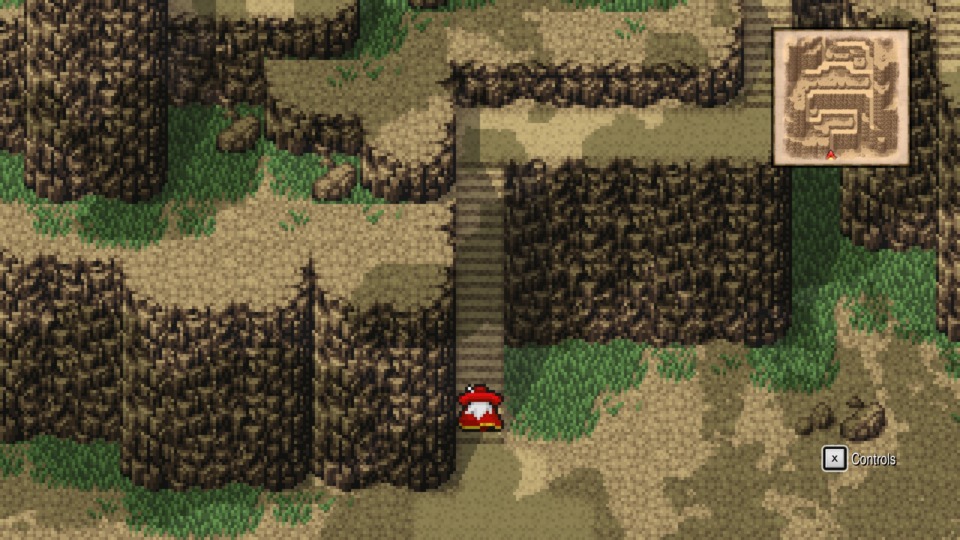
And this is the game when Squaresoft's Final Fantasy team feels like they finally decided to care about the storytelling aspect of roleplaying games. The towns represent the jobs in the game you can use and convey differing cultures and ways of life. Some NPCs do more than talk about far-off mythological evils that are bound to bring the world into disrepute. There are even optional towns and side quests to complete, which certainly did not start here, but Final Fantasy III is the game that pushed the original Final Fantasy team to do things differently from the rest of the RPG developer field. One of the earliest examples of this comes from a kid who challenges you to find a Chocobo and use it to circumnavigate the game's initial continent. There are no trash mobs to off nor an epic boss battle to process. It's an entirely non-violent challenge that makes you realize they were already starting to think outside of the box with their game design, an early sign of what was to come with the design ambitions of Final Fantasy IV and VI in particular.
However, the most prominent narrative accomplishment in Final Fantasy III is one that several future entries would emulate to great results. When your characters begin exploring the Tower of Owen, they realize they live on a floating continent suspended in the air by a field of magic and are a small piece of a larger world. When you beat the evil Medusa boss on the top of this tower, your characters are throttled off this continent and forced to explore the vast wastes of the remaining world. That's right, this is one of the first times a Final Fantasy game utilizes shifting worlds, and the result is incredible. While you start to doubt the game's claims of using extra memory on its cartridge, it pulls the rug from underneath you and forces you to pick up the pieces. It is BY FAR the best individual moment in the game. Sure, Final Fantasy I messes with you to a degree with its dimensional shifting tomfoolery at the end of its story. Nonetheless, there's no denying that the multi-world shifts in Final Fantasy IV, V, and even VI are all permutations of a trope that Final Fantasy III pioneered. When we think about the series's penchant for mid-game plot twists and thematic pivots, it sounds weird, but that tradition became a staple thanks to Final Fantasy III repeating it with production values that far exceeded Final Fantasy I.
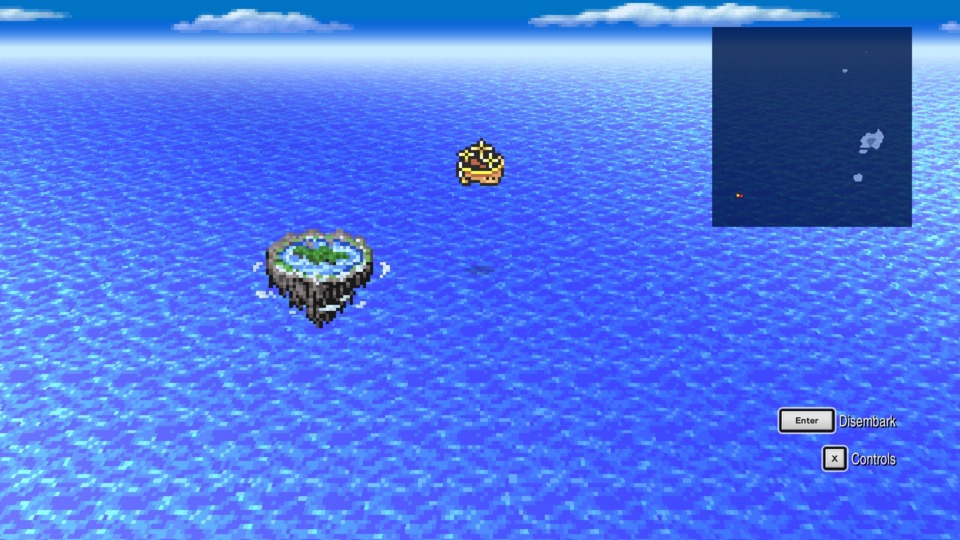
And the overworld exploratory stuff in Final Fantasy III is a significant improvement from the first two games. The overworld is not just more extensive but also more dynamic and detailed. The game's use of overworld-based cutscenes and establishing shots showcases Squaresoft's knack for high-tier production values. Before I go on a mini-rant on why the game's habit of using a stick rather than a carrot to force you into checking out its alternate jobs blows, let's give the design team some credit where it is due. The first crystal bestows what are essentially the jobs you had in Final Fantasy I, and they have enough combat efficacy that you can use them for almost half of the game. Had they not had tailor-made scenarios that force you to break away from your preferences, there would have been a real risk of their hard work programming some intricate and creative combat options going entirely ignored. I'm usually not a fan of the Thief class in these games, but being able to open locks and doors without needing to spend precious resources on keys led me to realize they had plenty of other uses, especially in combat. Likewise, seeing the Scholar use the "Libra" command to look up a boss's HP and abilities made me realize that the Libra command has been baked into the series far longer than I initially thought. Equally revelatory is when your characters crash and destroy their first airship; they are prompted to use an alternate vehicle instead. It's the first example of a Final Fantasy game giving you multiple vehicles, even some that transform on command.
But HOT DAMN, am I grateful the old guard of the Final Fantasy team did not look at what they accomplished in Final Fantasy III and think their work was done. As someone who will bat for Final Fantasy V as a top-eight game in the series, what Final Fantasy III lacks in comparison to the games that came after it is nothing to equivocate. Relatively seamlessly swapping jobs in and out in Final Fantasy V is what allows that game to continue to be revived by enthusiasts when the Four Job Fiesta event rolls around. That malleability is completely lacking in Final Fantasy III, and any community-oriented initiative is impossible. While I respect the Squaresoft team for trying new ideas to make players feel like they should check out all the classes at least once, the result is annoying and frustrating. They didn't know how to create organic in-game incentives to check out the jobs they designed, and what you are left with are the Mini-based dungeons, which act as incredibly arbitrary gates. In these dungeons, you must have members of your party inflicted with the "Mini" status, which renders all physical attacks inert and thus requires parties of entirely magic casters. Now, these dungeons are one of the most hated aspects of Final Fantasy III, and while I agree, they are not that big of a deal because the majority are incredibly short. Nonetheless, they are half-assed as the game drops the mechanic entirely by its third act, and you are left with a half dozen environments where you spend spell slots to miniaturize your party members and then again to reverse that effect. You may have the foresight to buy four items that either bestow or lift the status effect, but even that presents an early impediment as the items are not easy to find or cheap. However, yet again, the Final Fantasy team slightly stumbled, but let's not act like the experience didn't help them find a better alternative. Future games did not give you a square hole and bludgeon you over the head to put a square peg in that hole as Final Fantasy III does.
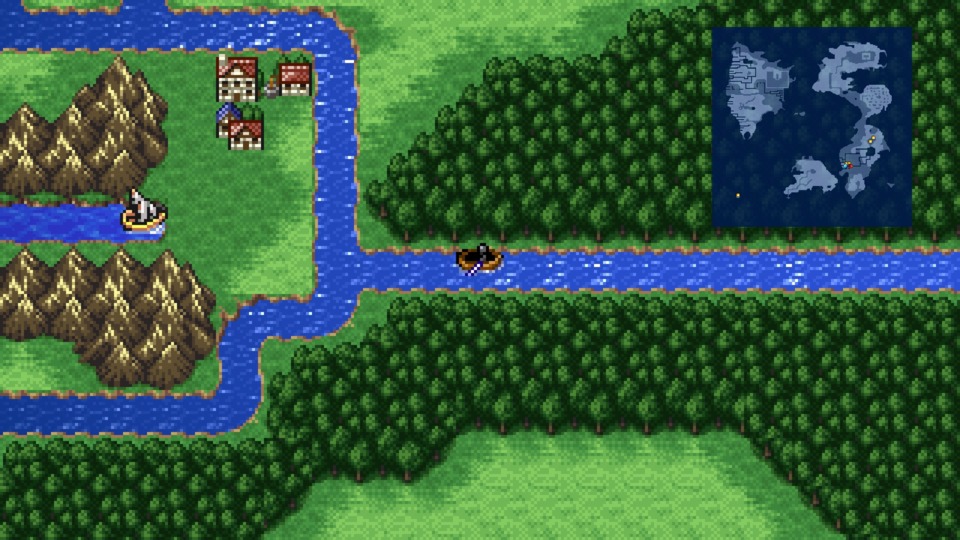
Part 5: Final Fantasy III Was Still Of The Era When Yuji Horii And Dragon Quest Were Running Laps Around Squaresoft
So imagine for a bit, but we are in Japan in the year of our lord, 1987; Wizardry, Dungeons & Dragons, and this little thing called Dragon Quest were all the rage. Out of this primordial soup came Final Fantasy I, which did well enough in a crowded field that Squaresoft moved forward with a sequel, Final Fantasy II in 1988 and Final Fantasy III in 1990. It's hard to imagine, especially from a non-Japanese perspective, but even well into Final Fantasy V, the series lived in the shadow of the Dragon Quest series. To say Final Fantasy III's development and programming team did not pay Dragon Quest/Warrior III's job system, even a cursory look, is a joke. The ubiquity of job systems in JRPGs was all the rage thanks to Dragon Quest III's stab at it, and for nearly three whole years, it was one of the most commonly emulated mechanics in the entire JRPG field. While you can continue to point to the early 8-bit era Final Fantasy games as pulling more from D&D all you want, I would push the theory that if Dragon Quest III doesn't have a swappable job system, then Final Fantasy III's notions of jobs would likely have been a retread of what we saw in the first game.
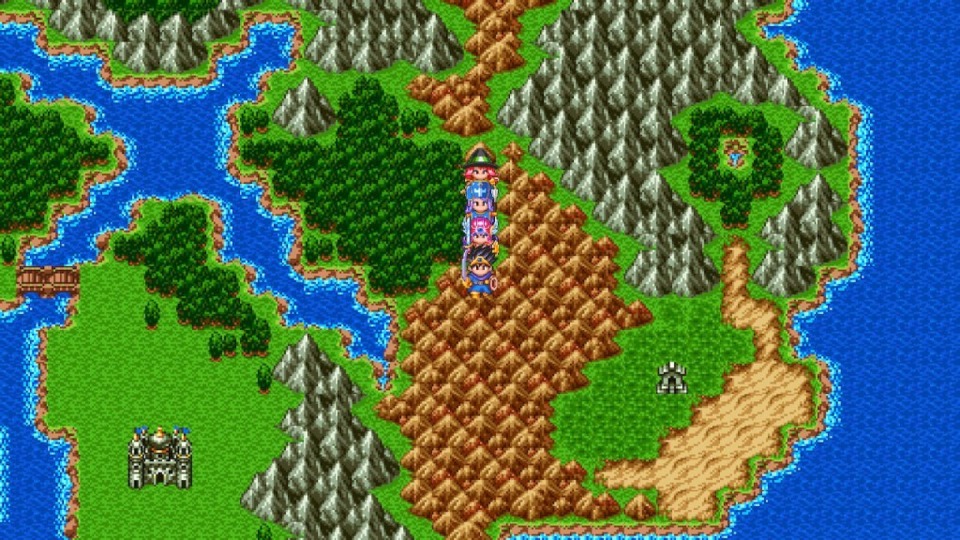
Please don't take this preamble to suggest I am not aware or cognizant of the fact that Dragon Quest in and of itself wasn't lifting its ideas from outside sources as liberally as the early Final Fantasy games. The JRPG formula of the 1980s and '90s essentially boiled down to sanding off the rougher edges of Wizardry and Ultima. Hence, one of the most heartwarming things you can watch from 2023 is Dragon Quest's creator, Yuji Horii, nerding out in his first face-to-face interaction with Robert Woodhead, and he repeatedly refers to Woodhead as the more substantial figure of the two. Nonetheless, with Final Fantasy III, Squaresoft steered the series back to what made the first game popular in a proper "sequel" after Final Fantasy II was decidedly not that. The difference, as I have already reviewed, is that the game expands upon the storytelling experiments of Final Fantasy II and the broad concepts of a job system already extant in Final Fantasy I. However, those improvements largely came from an unofficial industry-shared blueprint following the release of Dragon Quest III. And the issue here is that Final Fantasy III is not the game where Squaresoft was ready to challenge the conventions of Dragon Quest.
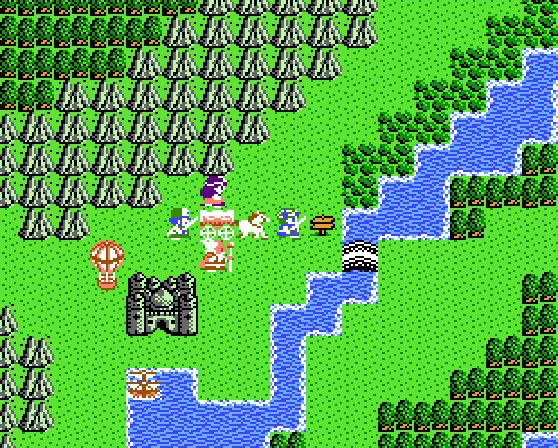
And for those of you who would attack me in suggesting that the Dragon Quest franchise still had Final Fantasy beat past Final Fantasy II, I beg you to play Dragon Quest III. Dragon Quest IV deserves credit for breaking its story into five distinct acts, a structure Squaresoft would borrow from HEAVILY when making Final Fantasy IV and VI. It also made the overworld navigational aspects of JRPGs mechanically engaging with its caravan system. That said, Dragon Quest III is the quintessential 8-bit JRPG. Like Final Fantasy III, it has a class/job system. Still, with Dragon Quest III, you hire characters to fill up the remaining slots, and whatever your party composition may be, that influences the core stats of the game's primary hero. These jobs progress linearly but coherently and can be promoted upon reaching level twenty. Dragon Quest III allows you to swap different characters in and out freely and doesn't dally about the size of its open world, either. All of this suggests that the rough edges in Final Fantasy III weren't a secret recipe that hadn't been discovered yet. The answers were there.
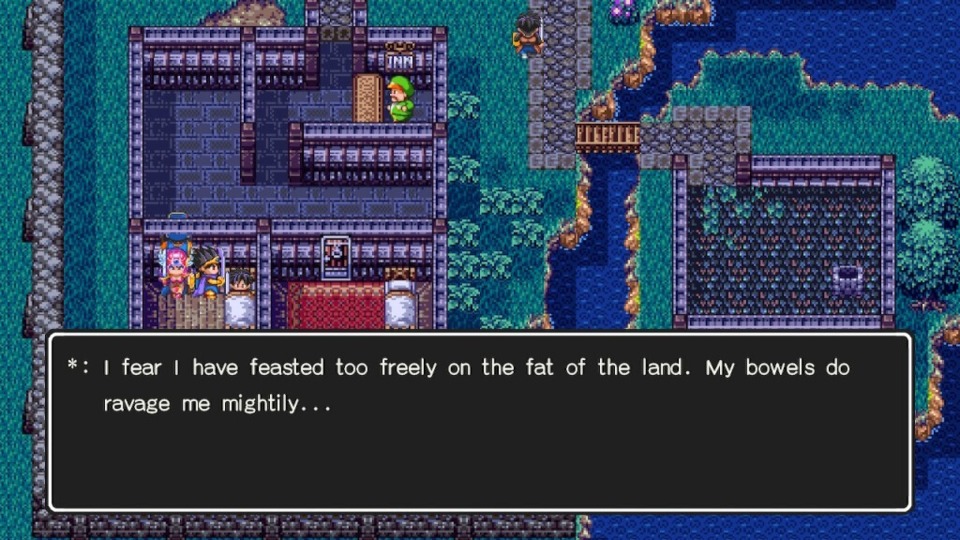
And I can hear the usual choir of readers ready to send me comments and rebuttals about how Dragon Quest has never been about storytelling and never will be. To that, I again ask you to return to Dragon Quest III. With the game being the third in a series, it presents itself as "another one of those," with a king tasking your character to off a much-ballyhooed legendary evil. For the first TEN HOURS, it plays as you expect, repeating the series' undercurrent of familial ties to destiny, with this one framing the protagonist as the son or daughter of the most famous hero up to that point. You go through multiple dungeons collecting articles of their father's legendary equipment before going to the Underworld. While there, you find them in tatters, having all but failed to complete their last mission to fend off one last great evil from taking over the world. As your character approaches their beloved father, they shockingly ask you to apologize to their child for their failure, with the message being that your character's father doesn't even know who you are. But that's not even close to the plot twist I want to discuss most. After your father directs you to save the world from Zoma, you do, and the world heralds you as the greatest hero ever and bestows you the title of Erdrick, the title of the main characters in Dragon Quest I and II. That's right, Dragon Quest III's plot twist is that it isn't a sequel. In its final moments, it subverts your expectations and shows you its hand. It reveals that it is actually a prequel, and at the end of its credits, directs you to continue the story and carry on the legacy of its character by playing Dragon Quest I and II. That's ballsy, and you know what? The ending plot twist of Dragon Quest III might have the storytelling highs of the Final Fantasy franchise beat even up to Final Fantasy IV.
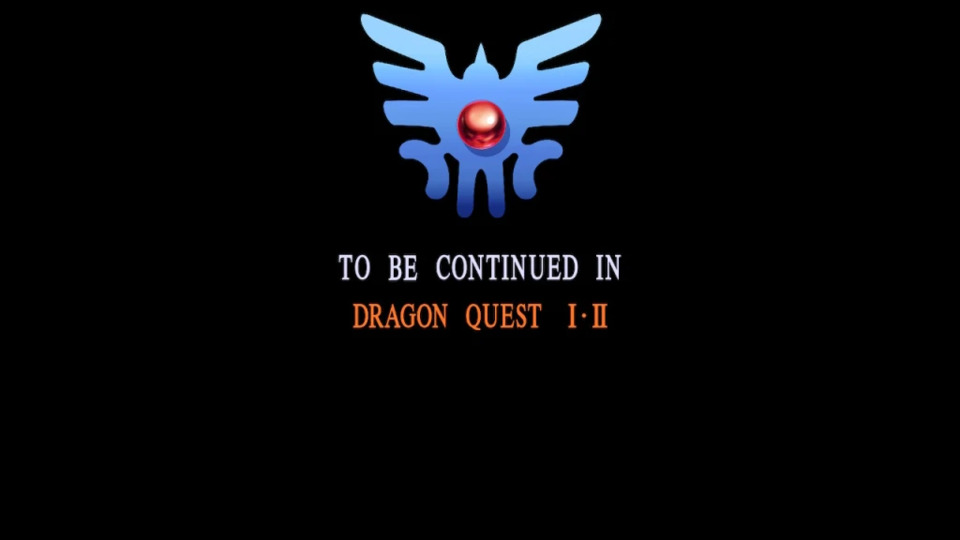
I fought Djinn, Medusa, Gutsco, and Hein in the first half of my playthrough of Final Fantasy III, and I couldn't tell you a thing about who they were or why they wanted to see the world burn. The game takes you across distant lands and shows a diverse and often beautiful plethora of environments. And yet, it feels empty. You trudge through narrow corridors in caves and temples, and even when they lead to a big cinematic boss battle, you can't help but feel like something is missing. As I will discuss next time, the game does make some honorable efforts at building a mythos, but you can tell the Final Fantasy team did not have the experience or confidence to take substantial risks with how they structured or told a story. The most significant risks in this game come from improvements to established series and genre conventions and scale. The game dwarfs most of its contemporaries in size and scale, but again, much of that is very literally empty space, and when it isn't cluttered with annoyances meant to force you to engage in grind-based feedback loops, something still feels "off." And yet, even that isn't a grave sin that should condemn this game to the bottom of the series' rankings. If it helped a team "get there," can it be as bad as the internet wants you to believe?
Tangent: Nasir Gebelli - The Most Important Person To The Success Of Final Fantasy You've (Likely) Never Heard Of
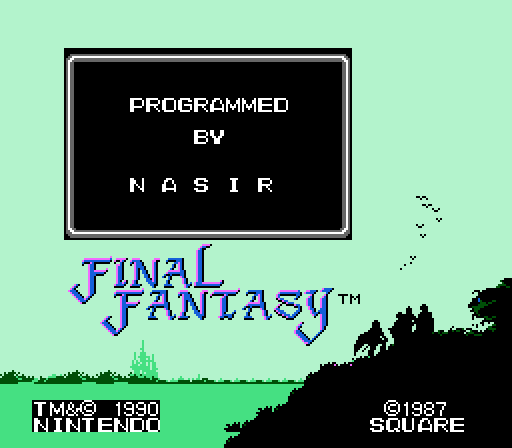
It is slightly amusing to think that Final Fantasy III never got a North American release until the 3D Remake, considering most of it was programmed in Sacramento, California. There's a fun and forgotten story about why that's the case. For the first three Final Fantasy games, while Hironobu Sakaguchi was the series' director and Hiromichi Tanaka was its lead designer, the early Final Fantasy figureheads had a slight Achilles' heel: none of the company's hometown boys were great programmers. To fill that void, Squaresoft ended up scouting an Iranian-American programmer who had already made a name for themselves in computer games named Nasir Gebelli. Gebelli was the lead and primary programmer for the first three Final Fantasy games and made major contributions to Secret of Mana/Seiken Densetsu 2. How vital was Gebelli to Squaresoft's early success? When Gebelli's work visa expired before production on Final Fantasy III ended, rather than let him go, Squaresoft took the unprecedented step of relocating its entire programming staff to Sacramento to complete the game with Gebelli still part of the team. He was THAT IMPORTANT to Final Fantasy III.
Gebelli "solved" a lot of the issues the Final Fantasy team encountered throughout its first three games. Final Fantasy I's side-view battles and transportation by canoe, boat, and airship? Yeah, Gebelli was the one who programmed them into the game after pitching them to Sakaguchi and others. Final Fantasy II's activity-based progression system and dialogue choices? Gebelli was the one who made the raw ideas of Akitoshi Kawazu work. And for Final Fantasy III, Gebelli was the one who programmed the game engine that made the game's job system work. Those guts came from him, and as they are the same guts that inspired dozens of Final Fantasy games since, he's by far one of the most essential figureheads to the international cache of the franchise. And his impact does not simply stop with Final Fantasy. He returned to Squaresoft to work on Secret of Mana and was instrumental in programming its pausable real-time combat system, Ring Command menu, cooperative multiplayer, and programmable AI. And suppose you are still skeptical that Gebelli is a figure worth celebrating. In that case, consider the fact that John Romero credits him as his favorite programmer, Mark Turmell cites him as an inspiration for getting into game development, and Jordan Mechner has referred to him as his ultimate role model. Gebelli deserves so much more credit, not just among Final Fantasy enthusiasts but also throughout the entire gaming hobby.
